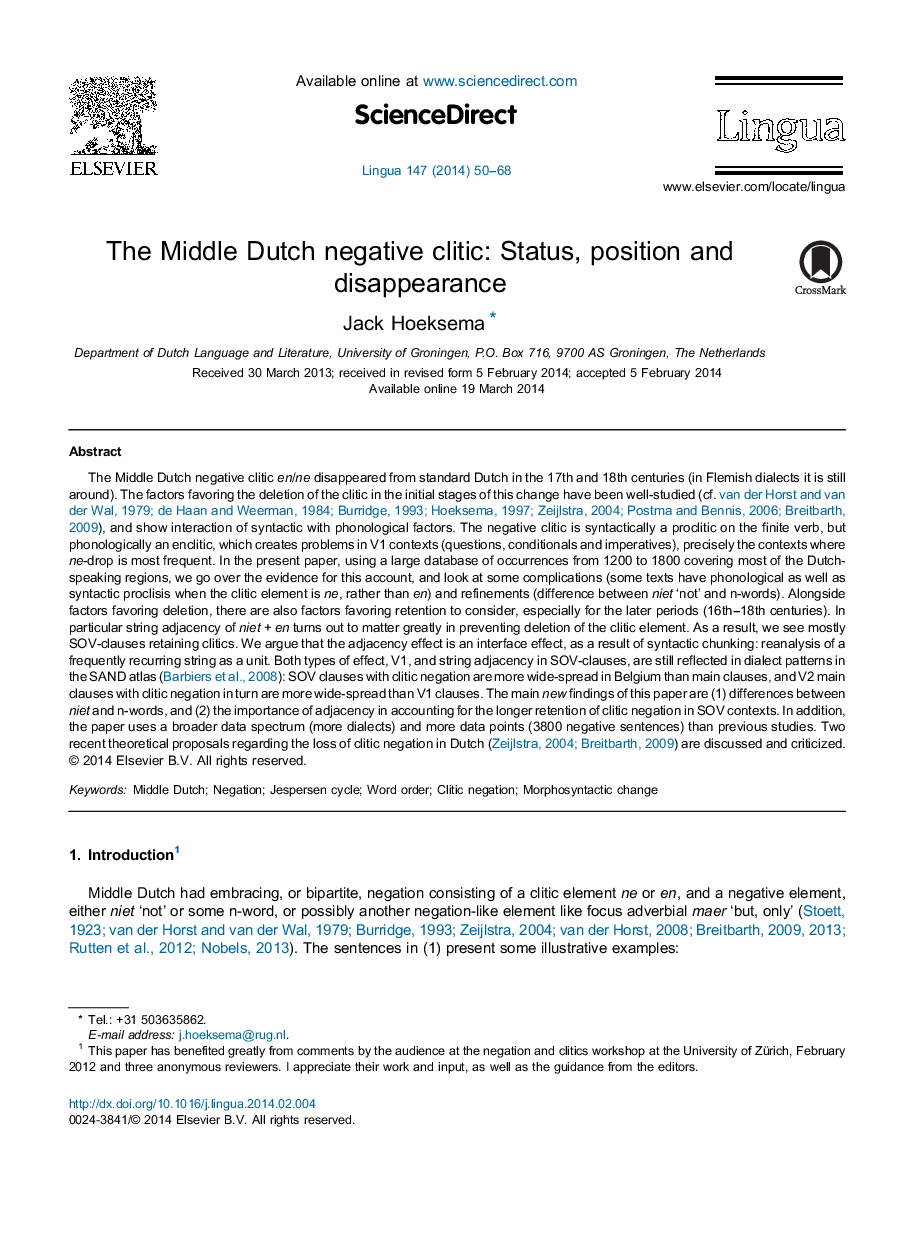| Article ID | Journal | Published Year | Pages | File Type |
|---|---|---|---|---|
| 935309 | Lingua | 2014 | 19 Pages |
The Middle Dutch negative clitic en/ne disappeared from standard Dutch in the 17th and 18th centuries (in Flemish dialects it is still around). The factors favoring the deletion of the clitic in the initial stages of this change have been well-studied (cf. van der Horst and van der Wal, 1979, de Haan and Weerman, 1984, Burridge, 1993, Hoeksema, 1997, Zeijlstra, 2004, Postma and Bennis, 2006 and Breitbarth, 2009), and show interaction of syntactic with phonological factors. The negative clitic is syntactically a proclitic on the finite verb, but phonologically an enclitic, which creates problems in V1 contexts (questions, conditionals and imperatives), precisely the contexts where ne-drop is most frequent. In the present paper, using a large database of occurrences from 1200 to 1800 covering most of the Dutch-speaking regions, we go over the evidence for this account, and look at some complications (some texts have phonological as well as syntactic proclisis when the clitic element is ne, rather than en) and refinements (difference between niet ‘not’ and n-words). Alongside factors favoring deletion, there are also factors favoring retention to consider, especially for the later periods (16th–18th centuries). In particular string adjacency of niet + en turns out to matter greatly in preventing deletion of the clitic element. As a result, we see mostly SOV-clauses retaining clitics. We argue that the adjacency effect is an interface effect, as a result of syntactic chunking: reanalysis of a frequently recurring string as a unit. Both types of effect, V1, and string adjacency in SOV-clauses, are still reflected in dialect patterns in the SAND atlas ( Barbiers et al., 2008): SOV clauses with clitic negation are more wide-spread in Belgium than main clauses, and V2 main clauses with clitic negation in turn are more wide-spread than V1 clauses. The main new findings of this paper are (1) differences between niet and n-words, and (2) the importance of adjacency in accounting for the longer retention of clitic negation in SOV contexts. In addition, the paper uses a broader data spectrum (more dialects) and more data points (3800 negative sentences) than previous studies. Two recent theoretical proposals regarding the loss of clitic negation in Dutch ( Zeijlstra, 2004 and Breitbarth, 2009) are discussed and criticized.
